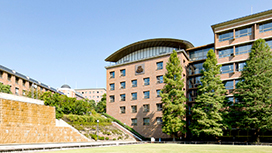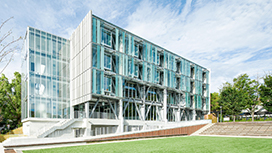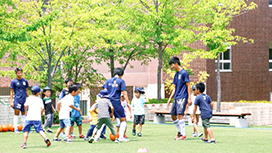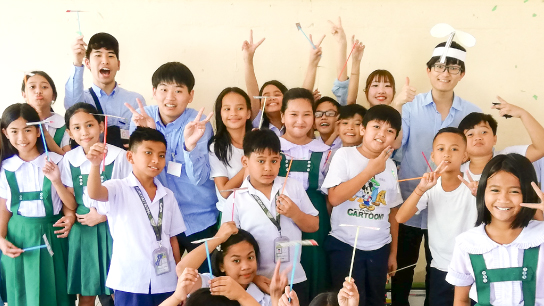History of
Kansai University
Kansai's First Law School
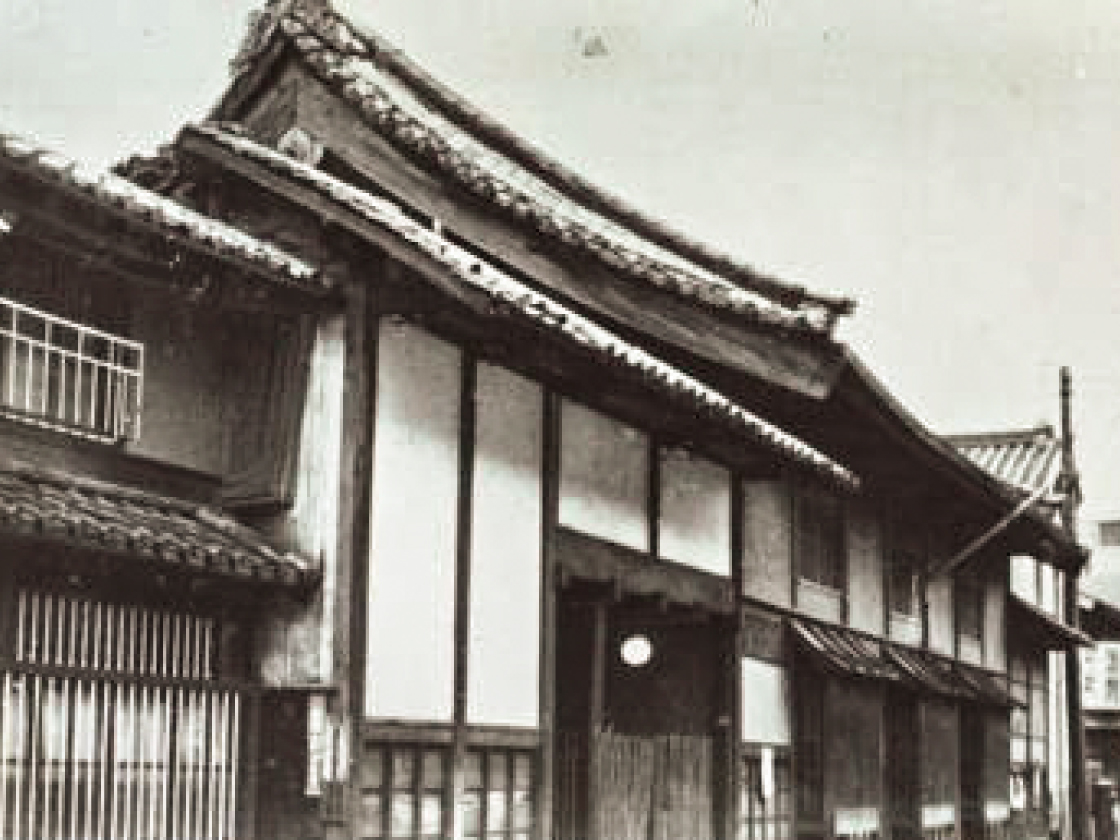
Kansai Law School—Kansai University's predecessor—was established at Ganshuji Temple (in Kyomachibori, Nishi-ku, Osaka) on November 4, 1886, through the cooperation of Kazushi Yoshida, a Freedom and People's Rights Movement activist, and Misao Inoue, Hisashi Ogura, and Masatada Hotta, all of whom followed the teachings of the French jurist Boissonade. Korekata Kojima, Chief Justice of the Osaka Court of Appeals at the time, participated in the founding of the school as an honorary employee and fulfilled a supervisory role.
Promotion to University Status
(Old System)
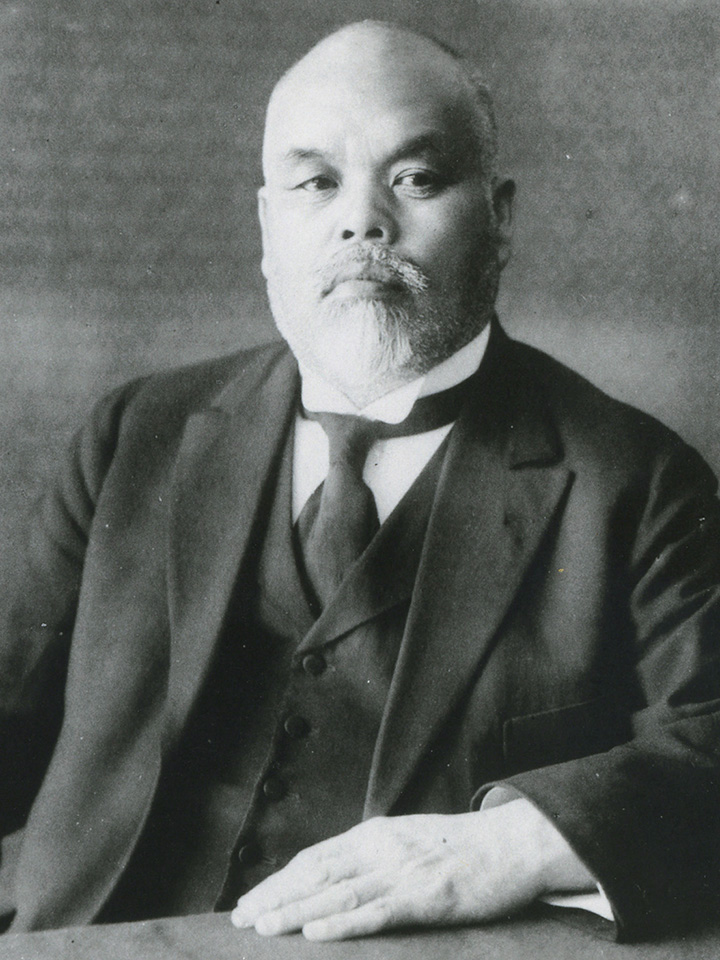
In 1922, a new campus was established in Senriyama. In addition, the institution was licensed as a university with two faculties: the Faculty of Law and the Faculty of Business and Commerce. Juntaro Yamaoka, the General Trustee and President at the time, advocated GAKU-NO-JITSUGE (Harmony between Academia & Society) as the university philosophy, and the university started focusing on holding public lectures and language lessons as well as sending out international students and providing physical education.
KU Renaissance
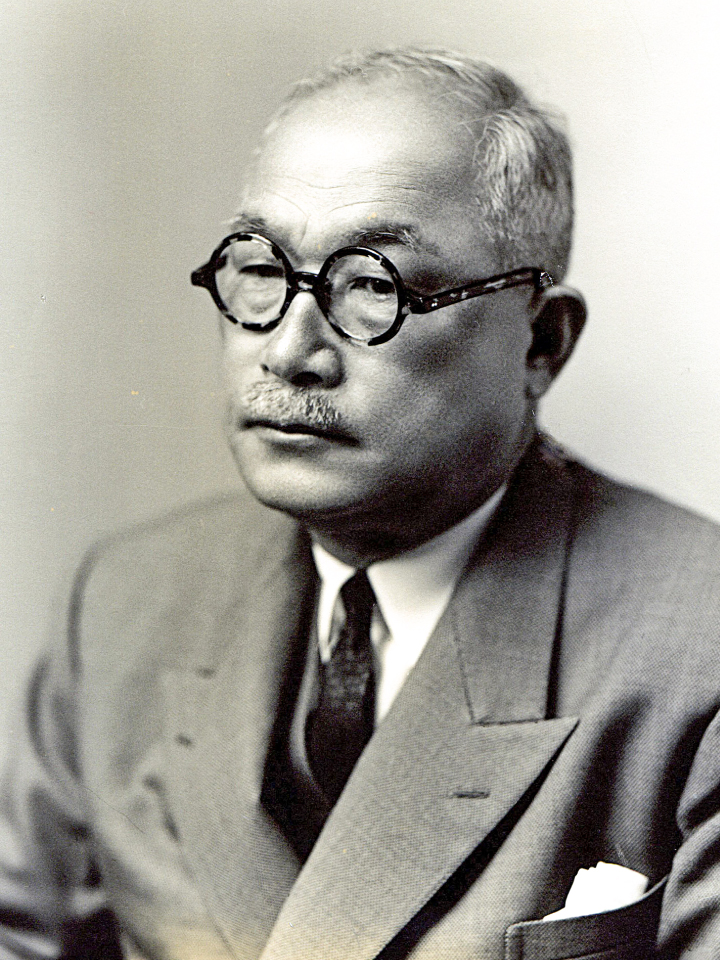
In 1947, as Kansai University was recovering from the devastation of the Second World War, Uichi Iwasaki, the university president at the time, said the following to the students: "At Kansai University, the dawn of a cultural renaissance is upon us. But what is the core of the KU Renaissance? … As we the students of this institution put everything we have into the pursuit of truth, we must always passionately and courageously challenge any kind of authority and power. This, and only this, must be Kansai University's pride and our academic tradition." In April of the following year, Kansai University converted to the new university system, establishing four faculties: Law, Letters, Economics, and Commerce.
Modern Day Kansai University
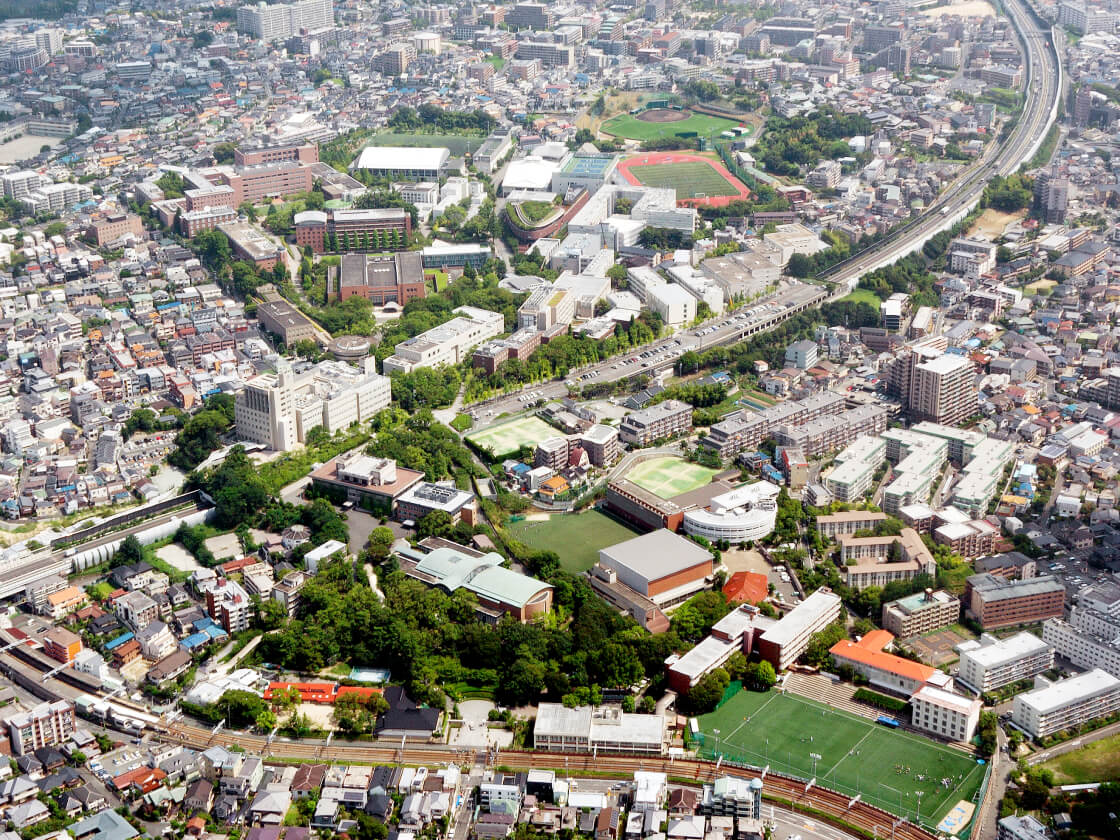
Currently, Kansai University has 14 faculties: Law, Letters, Economics, Business and Commerce, Sociology, Policy Studies, Foreign Language Studies, Health and Well-being, Informatics, Societal Safety Sciences, Business Data Science, Engineering Science, Environmental and Urban Engineering, and Chemistry, Materials and Bioengineering. The University also has graduate schools, a School of Law, a School of Accountancy, and a Japanese Language and Culture Program Preparatory Course (Bekka) and is continuing to develop.
Timeline
- Establishment: 1886 onward
- Actualization: 1922 onward
- Rebirth: 1945 onward
- Expansion: 1970 onward
- Embarkation: 1986 onward
Establishment:1886 to 1922
The 36-year period from when Kansai Law School was established at Ganshuji Temple in Kyomachibori, Nishi-ku, Osaka until it was promoted to university status by the University Ordinance was when the foundation of Kansai University was built and is therefore called the Establishment period.
| Year | Events |
|---|---|
| 1886 | Opened Kansai Law School at Ganshuji Temple in Kyomachibori, Nishi-ku, Osaka. The school was established by Misao Inoue, Hisashi Ogura, and Masatada Hotta—who studied under the jurist Boissonade—as well as Kazushi Yoshida. Relocated the university building to Awajimachi, Higashi-ku, Osaka. |
| 1887 | Relocated the university building to Koshoji Temple in Kawachicho, Kita-ku, Osaka. |
| 1903 | Built a new two-story university building in Edobori, Nishi-ku, Osaka. |
| 1904 | Established the Department of Economics. |
| 1905 | Reorganized and renamed the school as Kansai Private University. Established a university department, preparatory course, and specialized course (each of which had two departments: Law and Economics). |
| 1906 | Established the Department of Commerce. Established the Fukushima Campus in Kamifukushima, Kita-ku, Osaka, and then relocated there. |
| 1913 | Opened the Kansai Class A Commercial School. |
Actualization:1922 to 1945
In 1922, Kansai University was licensed under the University Ordinance. The University established the Faculty of Law, Faculty of Business and Commerce, and preparatory course. Later, the University established the Department of Letters in its specialized course as well as the Department of Economics in its Faculty of Business and Commerce. This period of great expansion is called the Actualization period.
| Year | Events |
|---|---|
| 1922 | Established a new campus in Senriyama. The institution was licensed as Kansai University by the University Ordinance and established the Faculty of Law, Faculty of Business and Commerce, preparatory course, and university song. |
| 1924 | Established the Department of Letters in the specialized course. |
| 1926 | Held the first University festival. |
| 1929 | Established the Tenroku Campus in Nagara, Oyodo-ku, Osaka, and then relocated the specialized course there from the Fukushima Campus. Opened a graduate school. |
Rebirth:1945 to 1969
In 1948, following the war, Kansai University converted to the new university system ahead of other universities throughout Japan, establishing four faculties: Law, Letters, Economics, and Commerce. The University then established the Faculty of Engineering in 1958 followed by the Faculty of Sociology in 1967, thus starting down the path toward becoming a university in both name and reality. This period is called the Rebirth period.
| Year | Events |
|---|---|
| 1947 | Opened Kansai University Dai-ichi Junior High School. During the turmoil following the war, Uichi Iwasaki, the University President, set forth the philosophy to guide the University's reconstruction. |
| 1948 | Transitioned to the new university system and established four faculties: Law, Letters, Economics, and Commerce. Opened Kansai University Annex Dai-ichi Senior High School. |
| 1950 | Established three graduate schools under the new system: Law, Letters, and Economics. |
| 1951 | Opened Kansai University Kindergarten. Opened the Institute of Oriental and Occidental Studies. |
| 1952 | Changed the name of Kansai University Annex Dai-ichi Senior High School to Kansai University Dai-ichi Senior High School. |
| 1953 | Relocated all evening undergraduate courses to the Tenroku Campus. Relocated Dai-ichi Senior High School from the Tenroku Campus to the Senriyama Campus. |
| 1957 | Relocated Dai-ichi Junior High School from the Tenroku Campus to the Senriyama Campus. |
| 1958 | Established the Faculty of Engineering. Opened the Institute of Economic and Political Studies. |
| 1960 | Relocated the Faculty of Engineering from the Tenroku Campus to the Senriyama Campus. |
| 1962 | Established the Graduate School of Business and Commerce and the Graduate School of Engineering. |
| 1964 | Opened the Institute of Industrial Technology (which was reorganized as the Organization for Research and Development of Innovative Science and Technology in 2002). |
| 1967 | Established the Faculty of Sociology. |
Expansion:1970 to 1986
In 1969, as a result of major distress and a search for solutions stemming from a raging university dispute, the open university concept was born. This period—during which Kansai University tried to find ways to better respond to society's needs, such as by holding public lectures at various locations in an effort to give university research results back to the community—is called the Expansion period. In 1986, Kansai University celebrated its 100th anniversary.
| Year | Events |
|---|---|
| 1971 | Established the Graduate School of Sociology. Opened a computer room. |
| 1974 | Opened the Institute of Buraku Studies (which was reorganized as the Institute of Human Rights Studies in 1985). |
| 1982 | Changed the name of the computer room to the Information Processing Center (which was relocated to the University Library/Information Processing Center in 1985). |
| 1984 | Completed the University Library/Information Processing Center. |
Embarkation:1986 to the present
If the first hundred years are considered Kansai University's first century, then its second century is a period consisting of a new campus and faculty, and establishing an annex-school. This is a period of considerable development for the Kandai Group. Kansai University is committed to reaching higher and trying harder. This is the period of our ongoing Embarkation.
| Year | Events |
|---|---|
| 1986 | Celebrated the university's 100th anniversary. |
| 1987 | Opened the Institute of Legal Studies. |
| 1989 | Opened the International Exchange Center (which was reorganized as the Division of International Affairs in October of 2008). Completed the Centenary Memorial Hall. |
| 1994 | Opened the Takatsuki Campus and established the Faculty of Informatics. Relocated all evening undergraduate courses to the Senriyama Campus. Opened the Kansai University Museum. |
| 1997 | Opened the Extension Reed Center. |
| 1998 | Established the Graduate School of Informatics. |
| 2000 | Established the Foreign Language Education and Research Institute (which was reorganized as the Faculty of Foreign Language Studies in 2009). |
| 2002 | Established the Graduate School of Foreign Language Education and Research. |
| 2003 | Abolished the two-faculty (daytime and evening courses) system and introduced a daytime-and-evening course system. |
| 2004 | Established the School of Law. Relocated the Information Processing Center to ENSHINKAN and changed its name to the Center fo Information Technology. |
| 2006 | Completed Mediapark RINPUKAN. Established the School of Accountancy. Completed the Kansai University Ice Arena (currently the Kansai University Takatsuki Ice Arena). Celebrated the University's 120th anniversary. |
| 2007 | Established the Faculty of Policy Studies. Reorganized the Faculty of Engineering as the Faculty of Engineering Science, Faculty of Environmental and Urban Engineering, and Faculty of Chemistry, Materials and Bioengineering. |
| 2008 | Opened Kansai University Hokuyo Senior High School. Established the Graduate School of Psychology. Opened the Research Institute for Socionetwork Strategies. |
| 2009 | Established the Faculty of Foreign Language Studies and Graduate School of Professional Clinical Psychology (for which we stopped accepting applications in fiscal 2020). Changed the name of the Graduate School of Engineering to the Graduate School of Science and Engineering. |
| 2010 | Opened the Takatsuki Muse Campus, established the Faculty of Societal Safety Sciences and Graduate School of Societal Safety Sciences. Also established the Kansai University Elementary School, Junior High School, and Senior High School at the campus. Opened the Sakai Campus and established the Faculty of Health and Well-being. Opened Kansai University Hokuyo Junior High School. |
| 2011 | Established the Graduate School of East Asian Cultures and Graduate School of Governance. |
| 2012 | Opened the Minami-Senri International Plaza and established the Japanese Language and Culture Program Preparatory Course. |
| 2013 | Celebrated the 100th anniversary of Dai-ichi Senior High School and Dai-ichi Junior High School. |
| 2014 | Established the Graduate School of Health and Well-being. Closed the Tenroku Campus. |
| 2015 | Established the United Graduate School of Professional Teacher Education (Osaka Kyoiku University) and participated as an affiliated university. |
| 2016 | Opened the Umeda Campus. Opened the Center for Innovation and Creativity. Opened the Research Center for Naniwa-Osaka Studies. Celebrated the University's 130th anniversary. |
| 2022 | Celebrated the Centennial of the University's Promotion. |
| 2023 | Opened the Suita Mirai Campus. |
| 2025 | Establised the Faculty of Business Data Science on the Suita Mirai Campus. |
- TOP
- About Kansai University
- University Overview
- History of Kansai University

